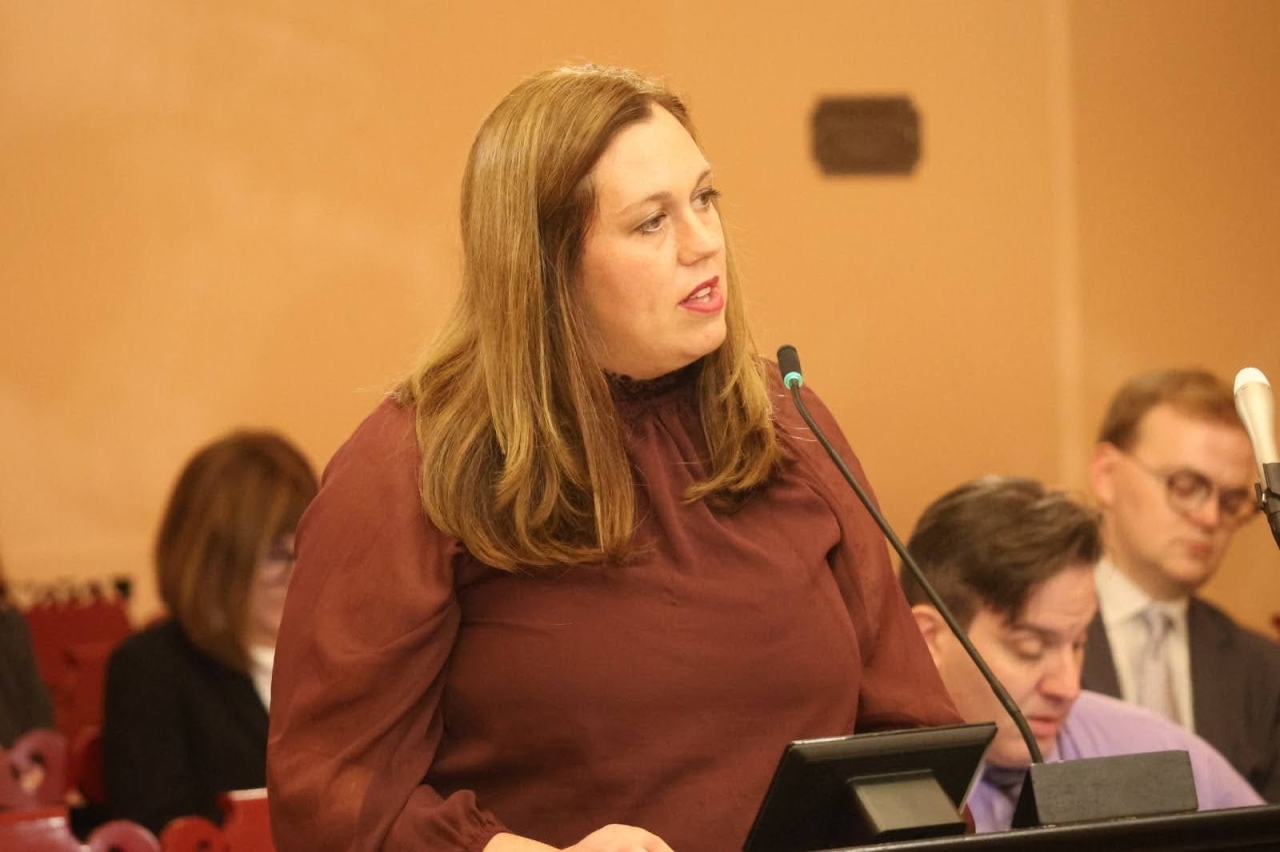Rep. McNally's HB 290 Calls for Refundable Tax Credit for Middle, Low-income Families

COLUMBUS - State Rep. Lauren McNally (D-Youngstown) today provided sponsor testimony in the Ways and Means Committee on House Bill (HB) 290, the Thriving Families Tax Credit. If authorized, it would give 986,000 urban, suburban, and rural Ohio families a much-needed boost and benefit an estimated 300,000 families (more than 55% of families) in Ohio’s 32 Appalachian counties who would be eligible for the credit.
“Parts of my current district and all of my new district will be in Mahoning County, which has significantly swung from blue to red. Right after the election I was asked that, given this change, would I be moving my agenda closer to the right as well. I made myself perfectly clear: I don’t have a partisan agenda. My north star is my next-door neighbors,” said Rep. McNally during her Tuesday sponsor testimony. “The Thriving Families Tax Credit was drafted in response to what is top of their mind including: Can they pay their bills? Can they send their kids to school with the supplies their children need? Can they put gas in their car, can they even afford a car that runs these days? Can they take a sick day, or do they need the paycheck more?”
Joint sponsored by Rep. Casey Weinstein (D-Hudson), the Thriving Families Tax Credit starts with a full benefit at $65k because these Ohioans have been paying more in state and local taxes as a result of all the tax loopholes and tax cuts Ohio has passed since 2005. It provides up to $1000 per child aged 0-5 and up to $500 per child aged 6-17. Families earning less than $65,000 annually would qualify for the full benefit amount, with benefits tapering off for families earning $65-85,000. The refundable credit phases out at $85k is to prevent a benefit cliff. The total bill cost is under $910 million annually while still making a tangible difference.
The federal American Rescue Plan Act of 2021 temporarily increased the CTC to $3,600 per child under age 6 and $3,000 per child up to age 17. This expansion included children from families with low and moderate incomes who were previously left out. The result was a historic low in child poverty of 5.2% in 2021. The Rescue Plan by itself lifted more people, including more children, above the poverty line with government assistance in a single year than any other piece of legislation enacted in more than 50 years. Despite requests from President Biden to extend the credit enhancements, Congress allowed those measures to expire at the end of 2021.
“Passage and implementation of the Thriving Families Tax Credit is not a matter of ‘if’ we can but is instead a matter of ‘will we.’ HB 290 is a chance to demonstrate our priorities. We are legislators and we are the power of the purse. We have the money, and we decide how it's spent,” said Rep. McNally during her sponsor testimony. “When we do our budget every year, we are telling our constituents what matters most to us. Right now, we are not telling or showing working Ohioans that their needs and their families matter most. We are not acting with the same urgency, the same pinch, that they feel every day in their households.”
Two decades of massive income tax cuts have overwhelmingly shifted Ohio’s tax burden away from top earners to the working class. Over the years as each income quintile has been receiving a tax cut on average, the cut is not being evenly distributed. The lowest earning Ohioans, those making less than $24,000 a year, receive an average tax cut of $122 a year, just 1% of nearly $13 billion in income-tax cuts. That’s about $10 a month, allowing the lowest-income Ohioan enough to buy lunch once a month.
Conversely, the average household among the top 1% of Ohio earners, with incomes above $647,000, now contribute over $52,000 per year less than they once did, resulting in a loss of about $12.8 billion a year in revenue that could otherwise be used to meet the needs of Ohioans. The Business Income Deduction, known as the LLC loophole that allows owners of many Ohio businesses to pay no taxes on the first $250,000 of business income, is the third largest tax break in the state. It has resulted in about $1 billion a year in lost tax revenue as of tax year 2022.
“HB 290, or the Thriving Families Tax Credit, is an attempt to cut down on this cost-of-living crisis. It does so by targeting the pocketbooks of those who need it most: the working class,” said Rep. McNally during her sponsor testimony. “Passing the Thriving Families Tax Credit is a question of political will. It is about approaching our state budget with a generational lens while being fiscally responsible and doing the most good for the most people. HB 290 demonstrates that the quality of our neighbors' joy and reducing the stress in their lives is worthy of our investment at the state level. We can afford this, and we can afford to make these very important priorities and values statements. Let's work from a place of shared values and a shared belief that working Ohioans need a break and that our neighbors are our north stars.”
The Thriving Families Tax Credit requires several readings in the Ways and Means Committee before a vote to all members of the Ohio House of Representatives. All legislation introduced in a General Assembly must become law before the end of the General Assembly. Rep. McNally intends to re-introduce the Thriving Families Tax Credit in the 136th General Assembly if not made law by the end of the year.







